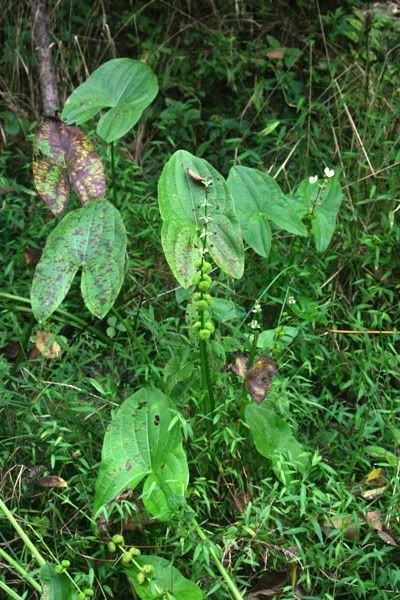Growing Sagittaria brevirostra from seed
#1
 Guest_Newt_*
Guest_Newt_*
Posted 22 October 2008 - 12:04 PM
#2
 Guest_nativeplanter_*
Guest_nativeplanter_*
Posted 22 October 2008 - 12:48 PM
Has anyone tried this? I have found information on raising S. cuneata and S. latifolia from seed. Apparently S. cuneata requires a lengthy cool-warm-cool cycle to initiate germination, while S. latifolia requires only a single cool cycle of about 8 weeks. Any idea which, if either, pattern is followed by S. brevirostra?
I have not germinated this one, but if I could find no other information, I would assume it needs an 8 to 10 week cool period. I would sprinkle the seeds in a wide, shallow pot, wrap in a plastic bag, and put in the back of the fridge. Just press the seeds into the soil or barely cover. I would use a sterile seed starting mix, which will reduce the chances of it going moldy and if nothing else will ease the spouse. (But I'll be honest, I've never found the need for a sterile medium). If you forget about it and take it out after, say, 14 weeks, it shouldn't cause a problem. Then just move it somewhere bright and warm and keep the surface moist. You can keep the very surface moist using a spray bottle if a watering can is too much.
#3
 Guest_Newt_*
Guest_Newt_*
Posted 22 October 2008 - 01:09 PM
If I'm successful I should have far more plants than I need, and I'll be happy to send some to whoever wants them.
The adult plant:

It's smaller than S. latifolia, generally 12-24" high with inflorescence reaching up to 30".
Edited by Newt, 22 October 2008 - 01:48 PM.
#4
 Guest_Newt_*
Guest_Newt_*
Posted 28 October 2008 - 01:33 PM
#5
 Guest_nativeplanter_*
Guest_nativeplanter_*
Posted 28 October 2008 - 02:51 PM
#6
 Guest_Newt_*
Guest_Newt_*
Posted 28 October 2008 - 04:33 PM
I placed the plants in my scud/daphnia tank (a concrete tank in an unheated greenhouse), with the rhizome weighted to keep it in the thick mulm at the bottom of the tank. I cut away the raggedy larger leaves, and initially saw some new growth. There were a number of grubs in the rhizome; I picked out all the ones I could see. But the rhizome eventually grew soggy and rotted, while the new foliage drooped into the water and was eaten by the scuds.
It is possible the water chemistry shock was too much (I moved them from a neutral/slightly acid blackwater ditch to my local hard and basic water), but I suspect the rhizome breakage and transplant stress allowed some sort of infection to take hold. I have had more luck with smaller sags from nearby wetlands, probably because I could uproot the entire plant, quickly transport it to its new home, and put it back in water with similar chemistry.
Edited by Newt, 28 October 2008 - 04:33 PM.
#7
 Guest_nativeplanter_*
Guest_nativeplanter_*
Posted 30 October 2008 - 07:49 PM
1 user(s) are reading this topic
0 members, 1 guests, 0 anonymous users







